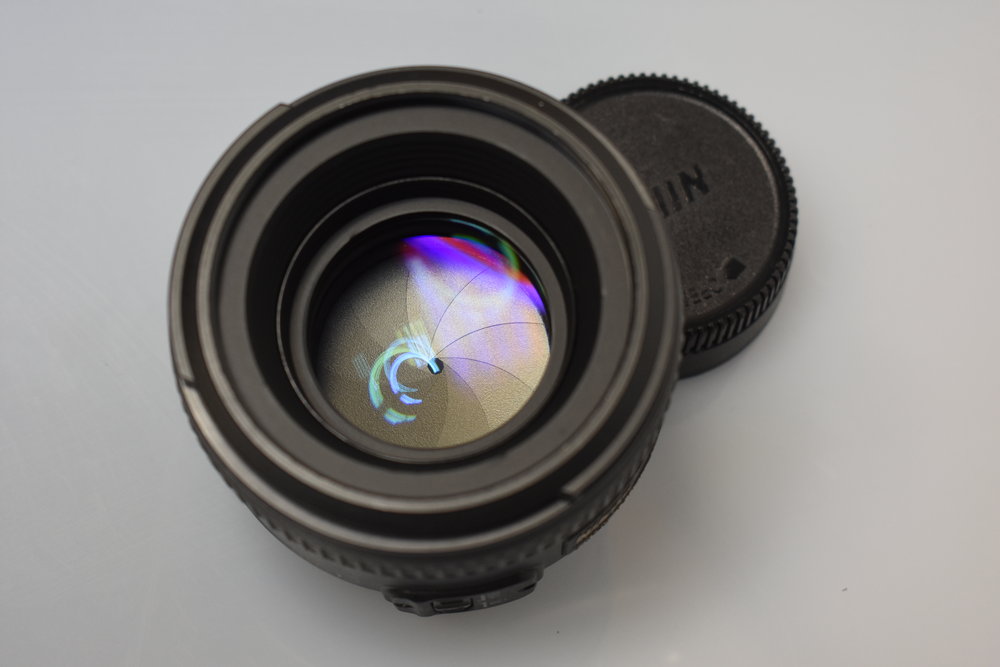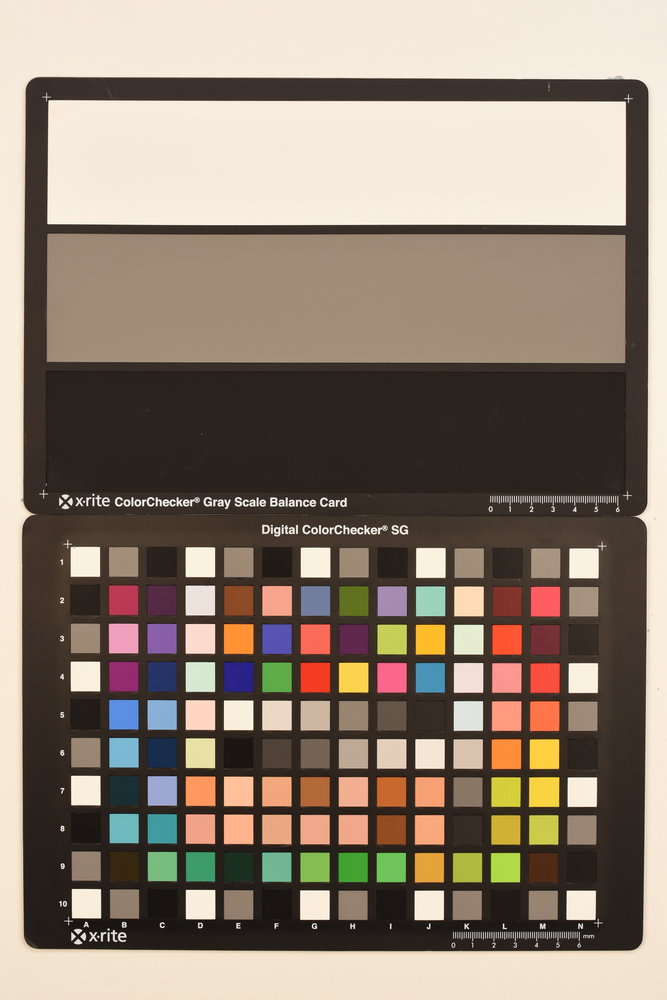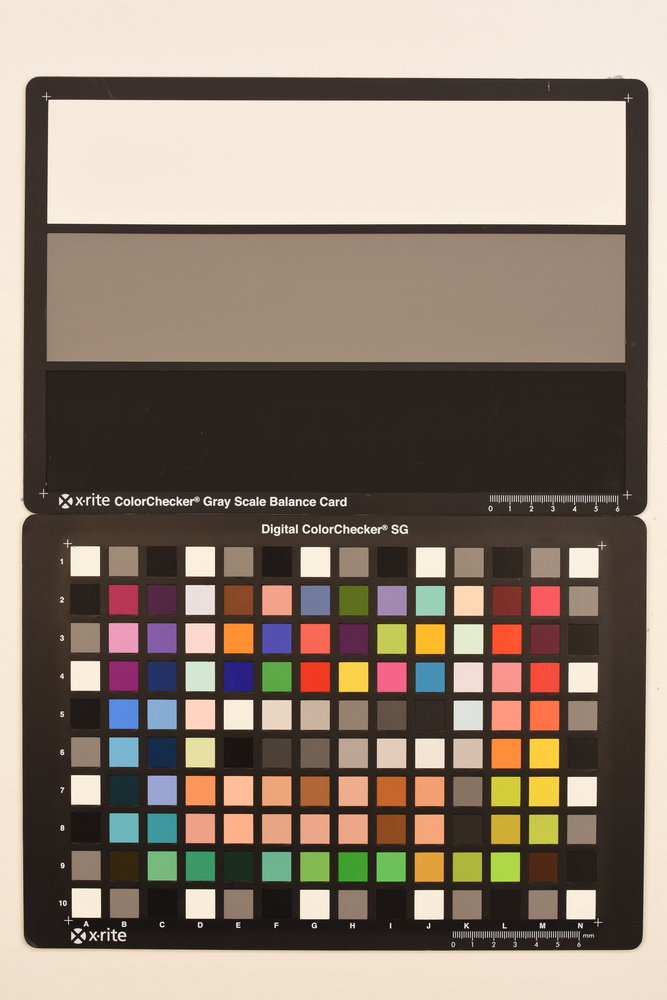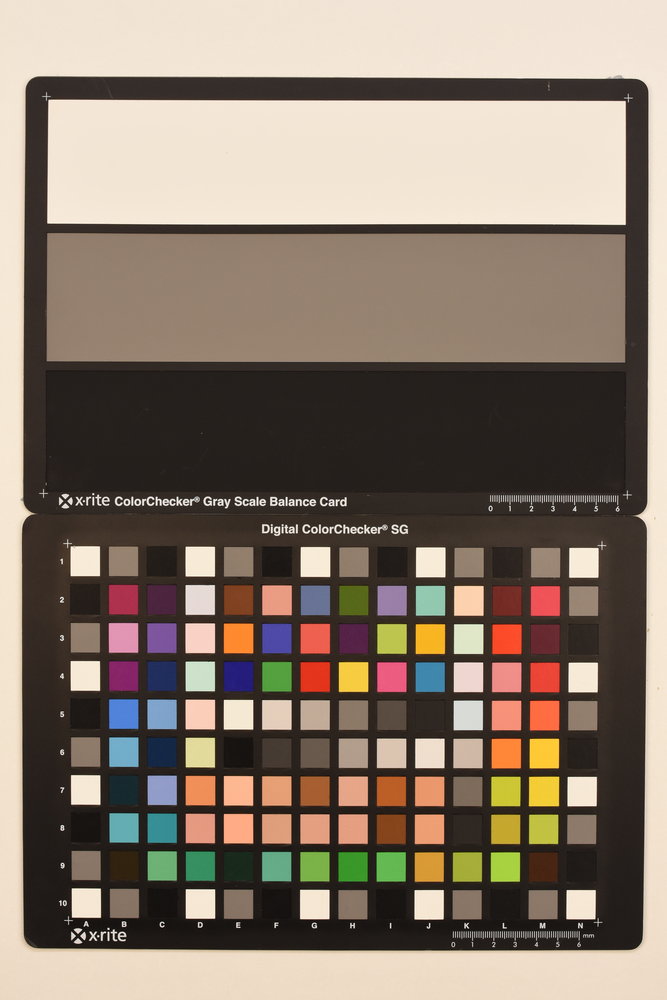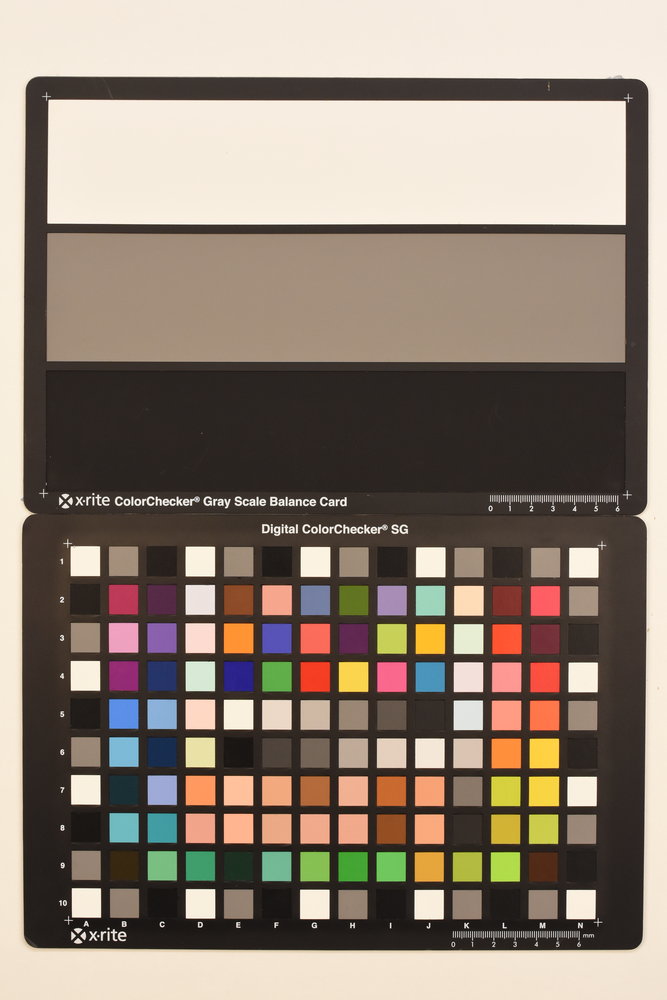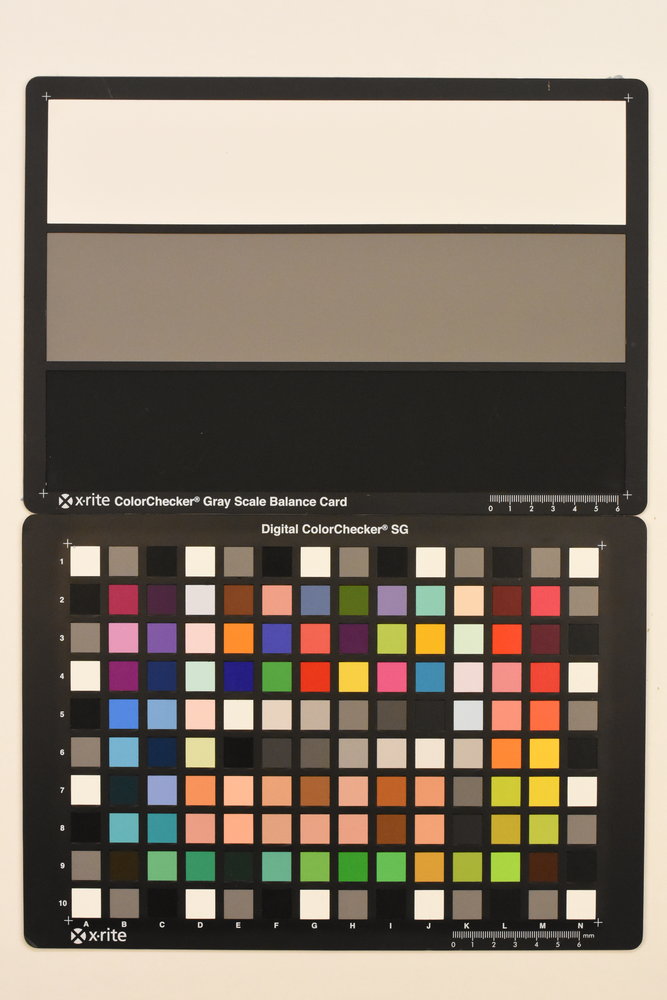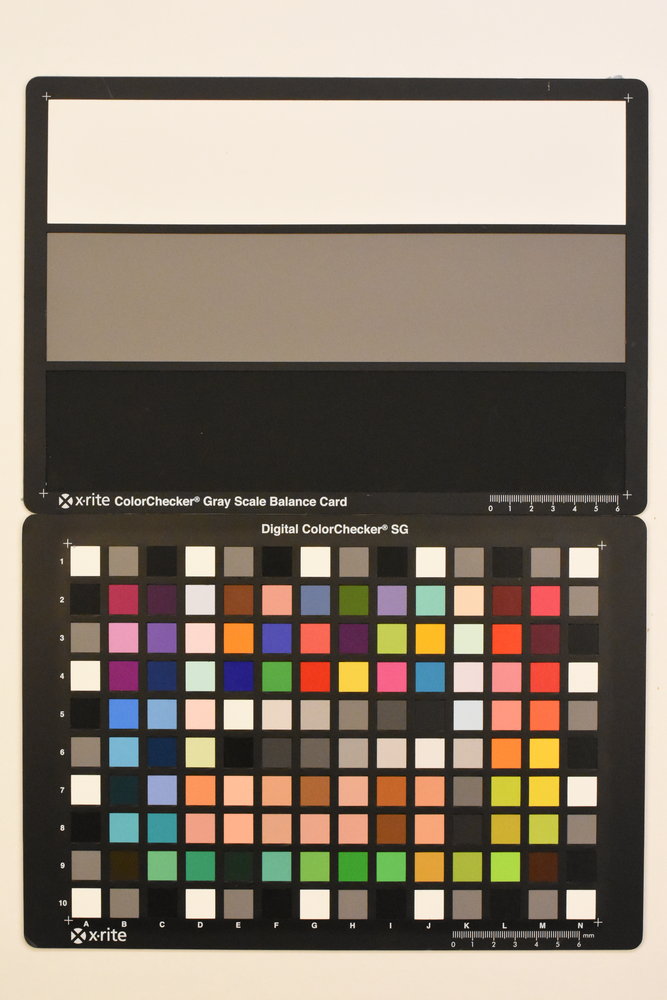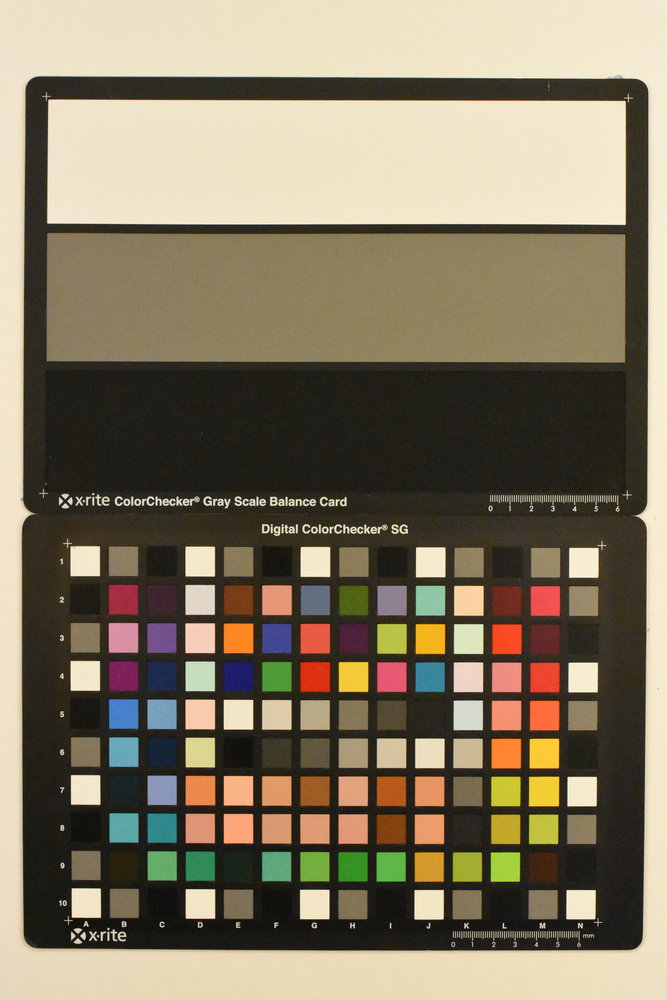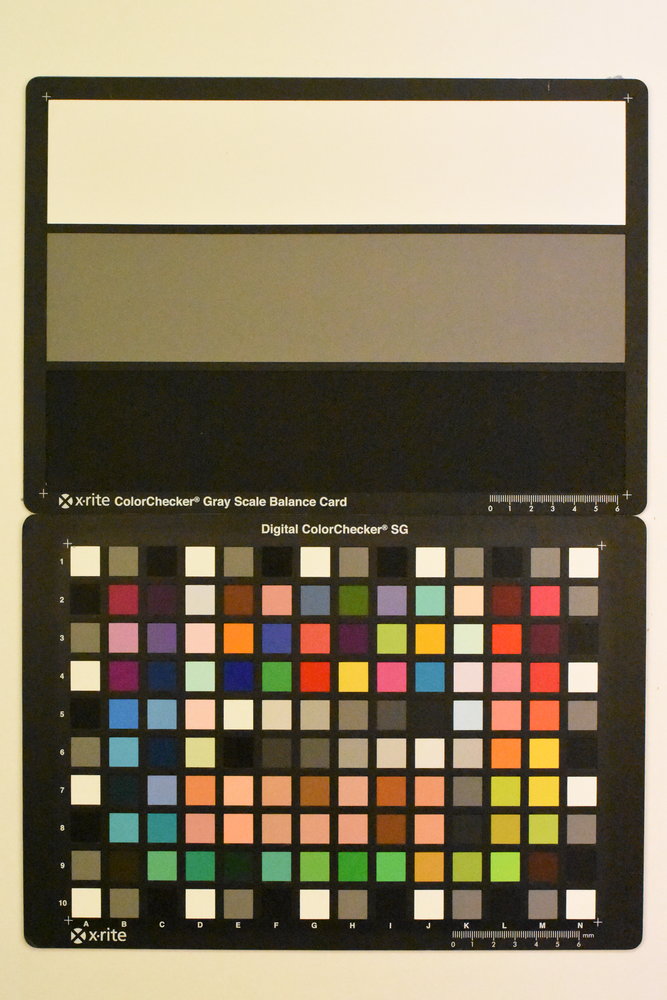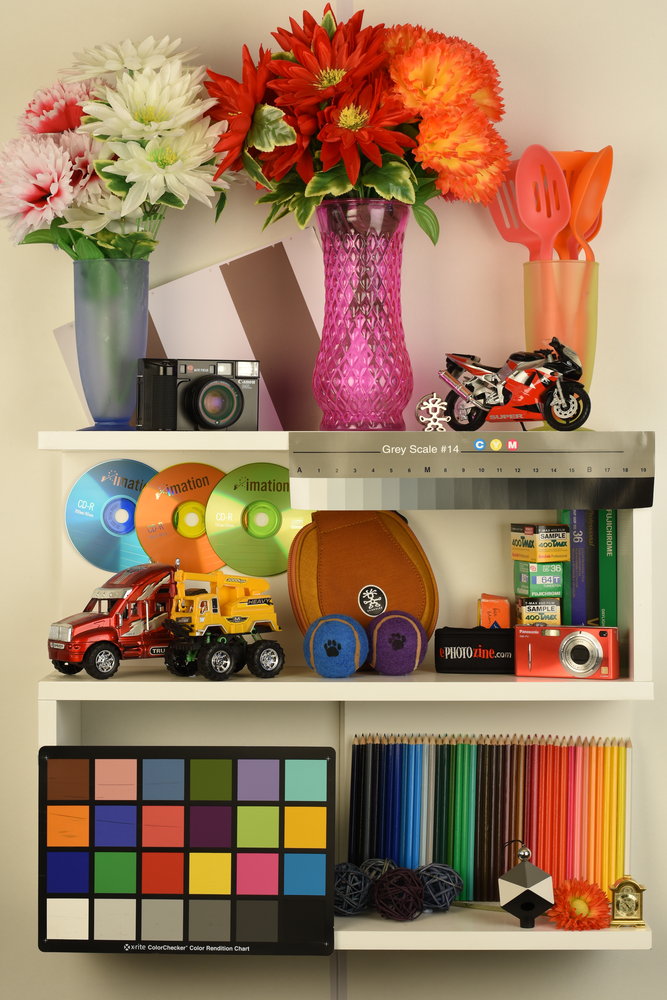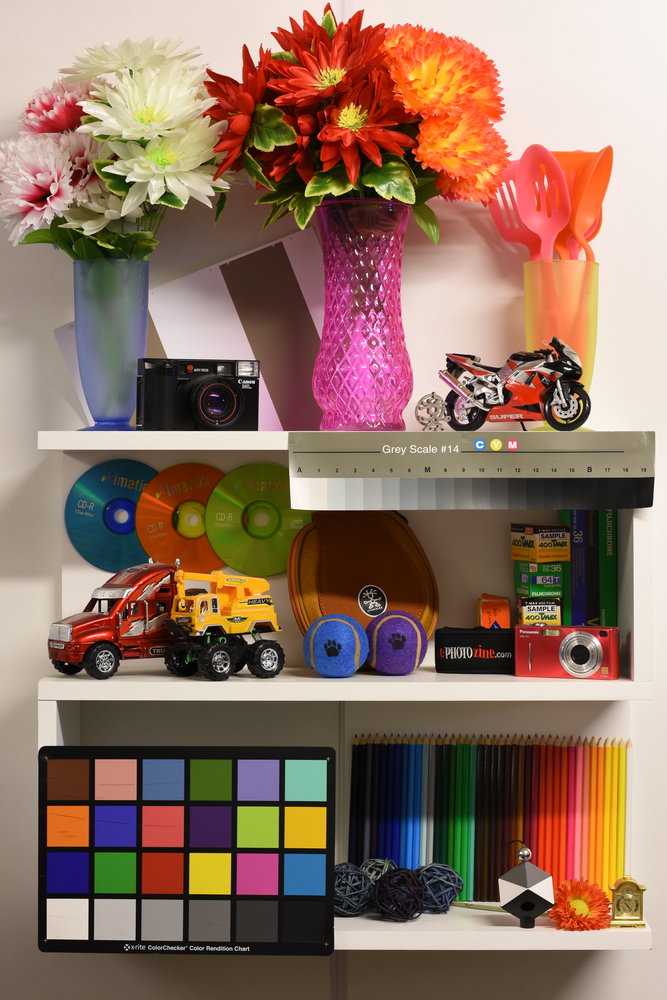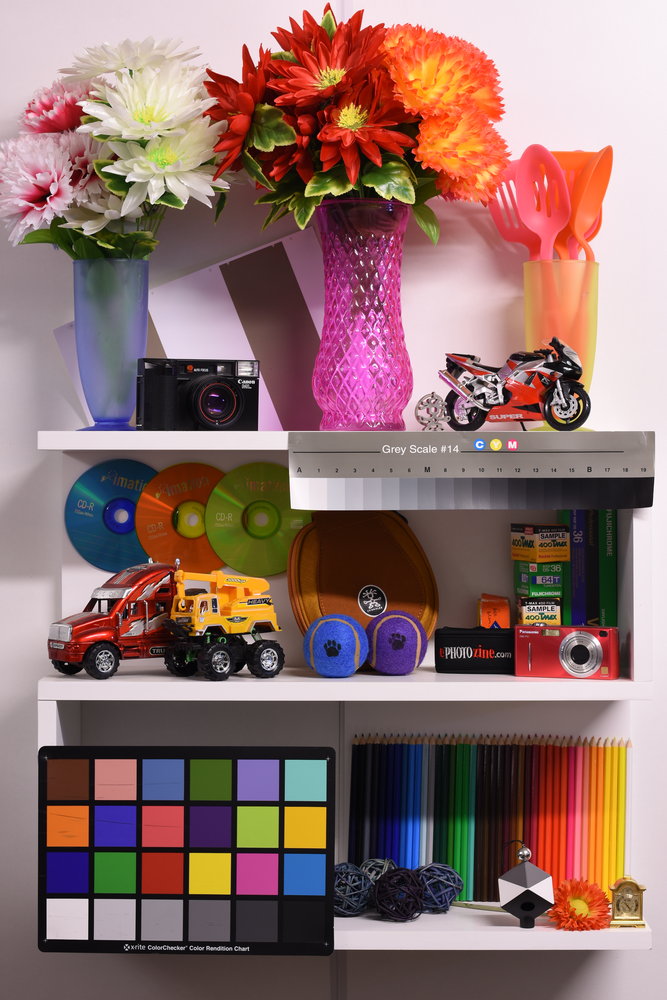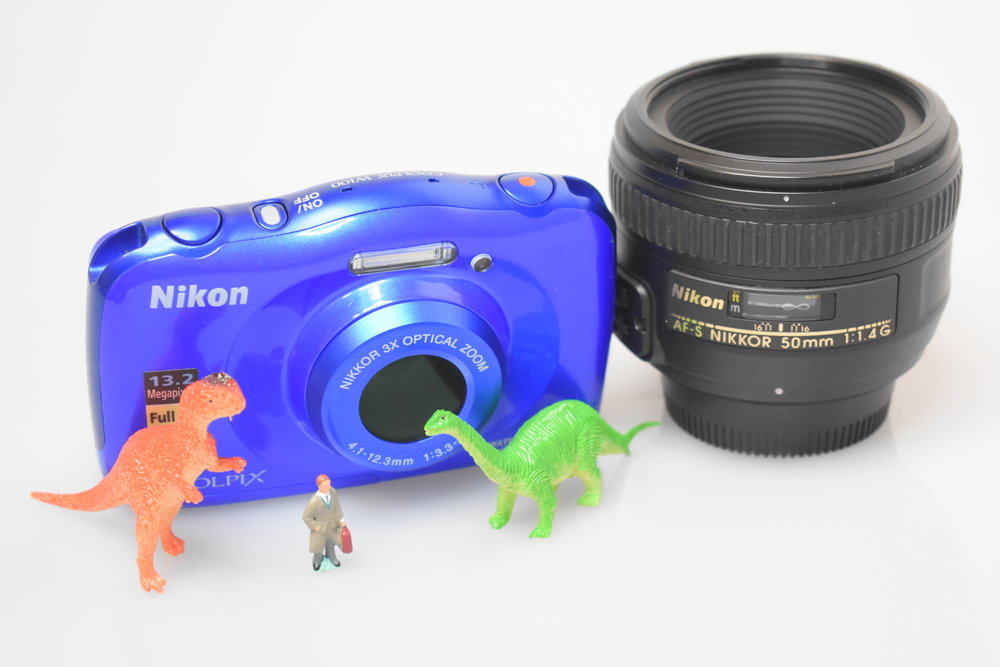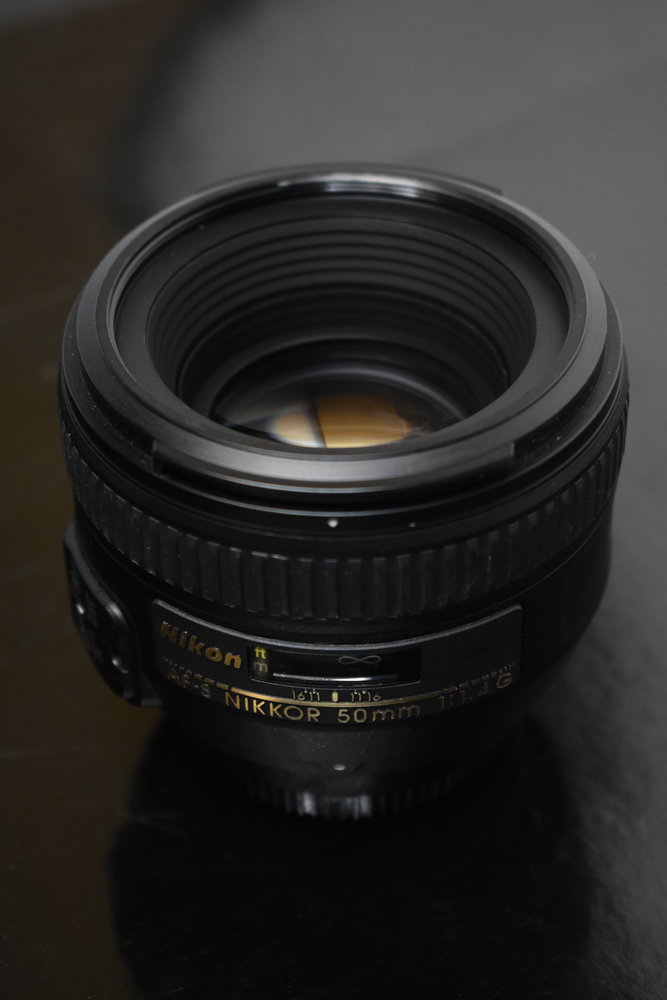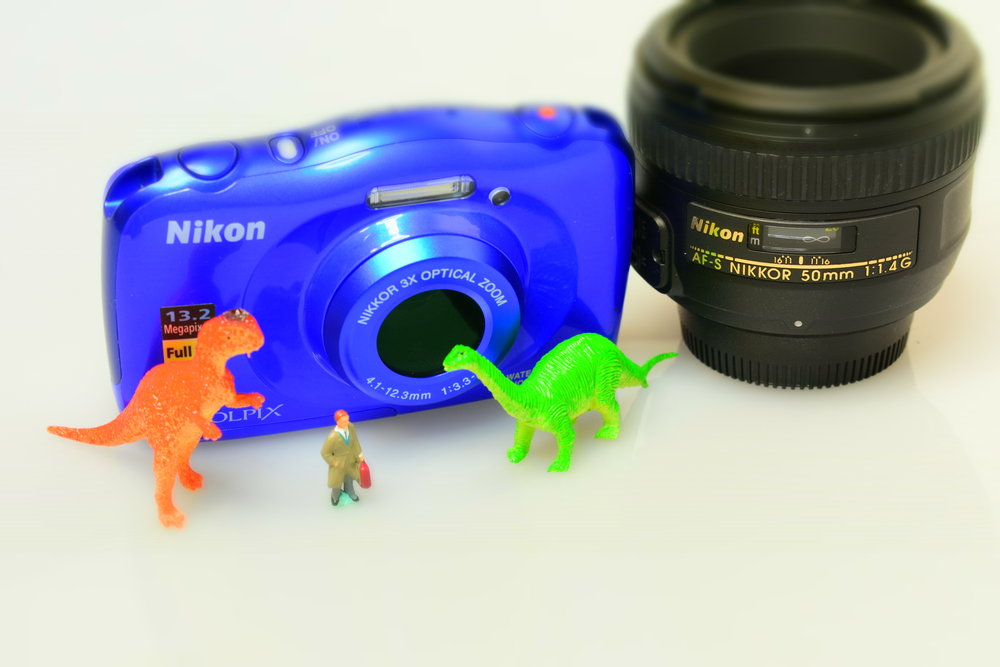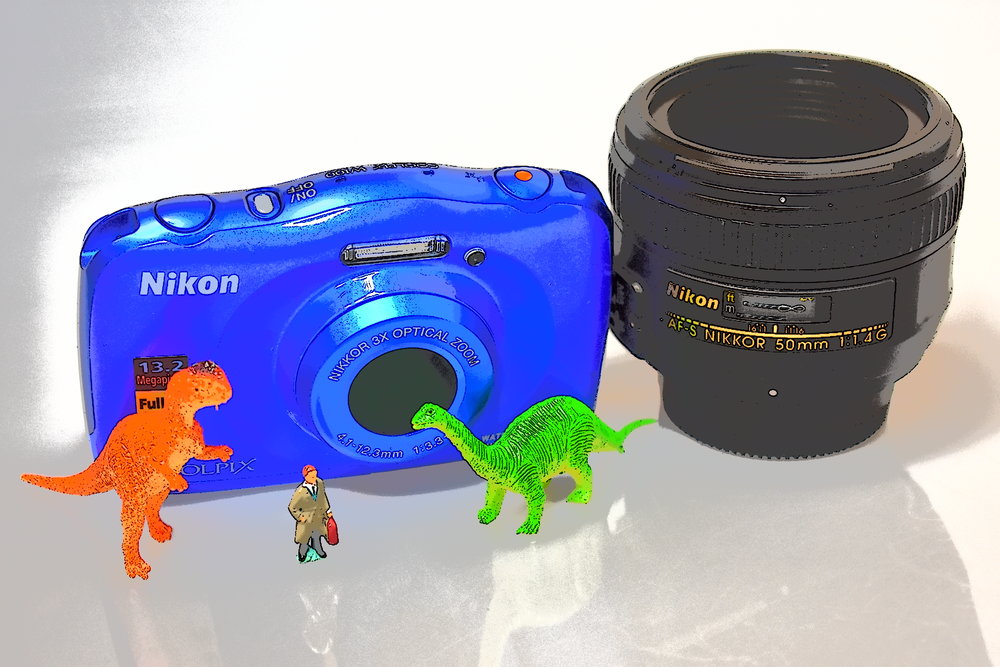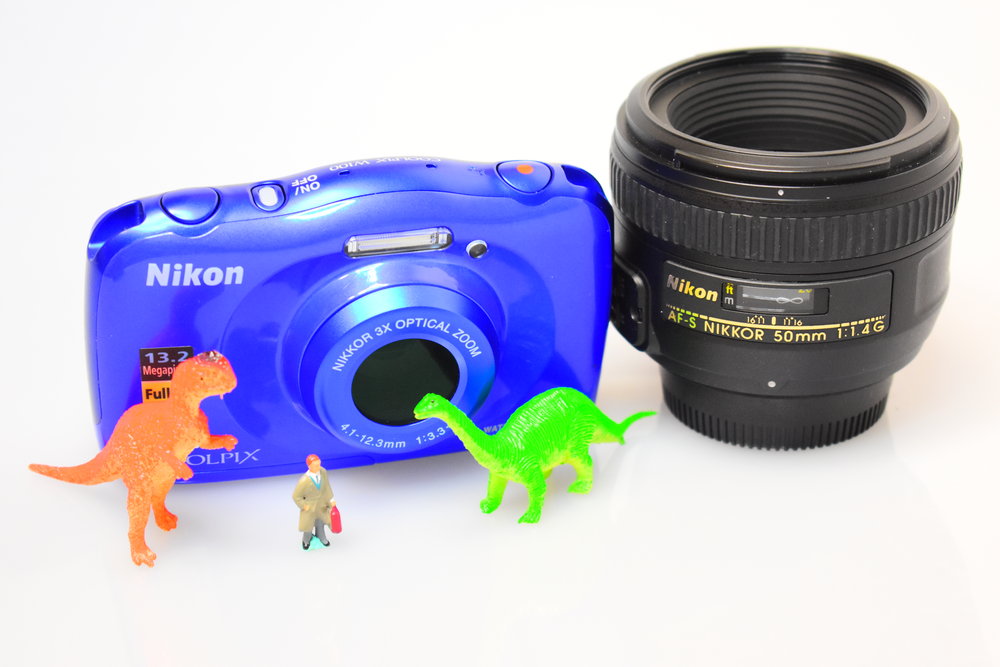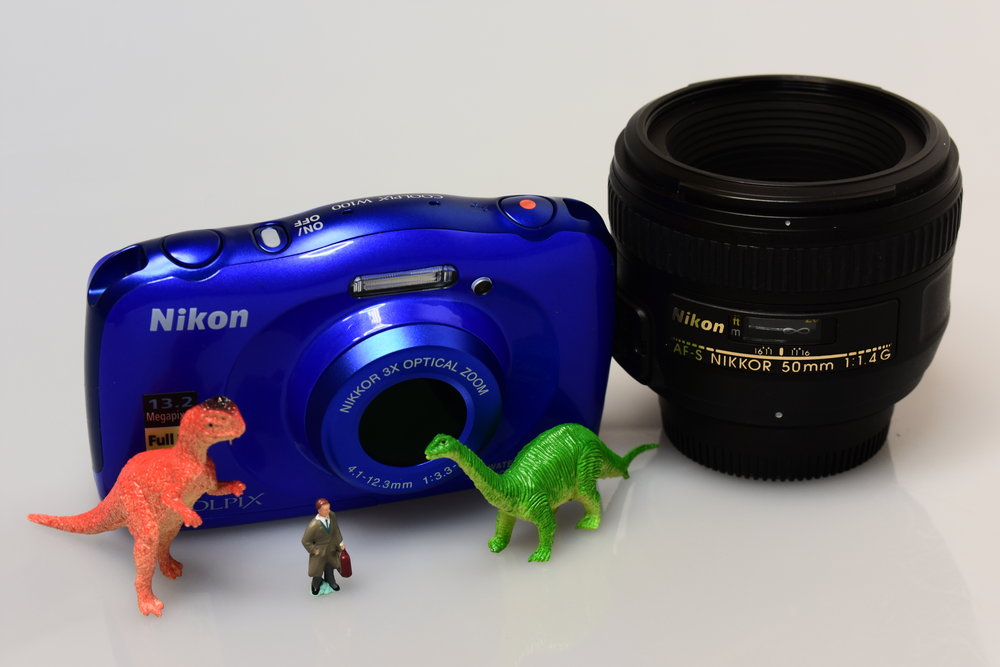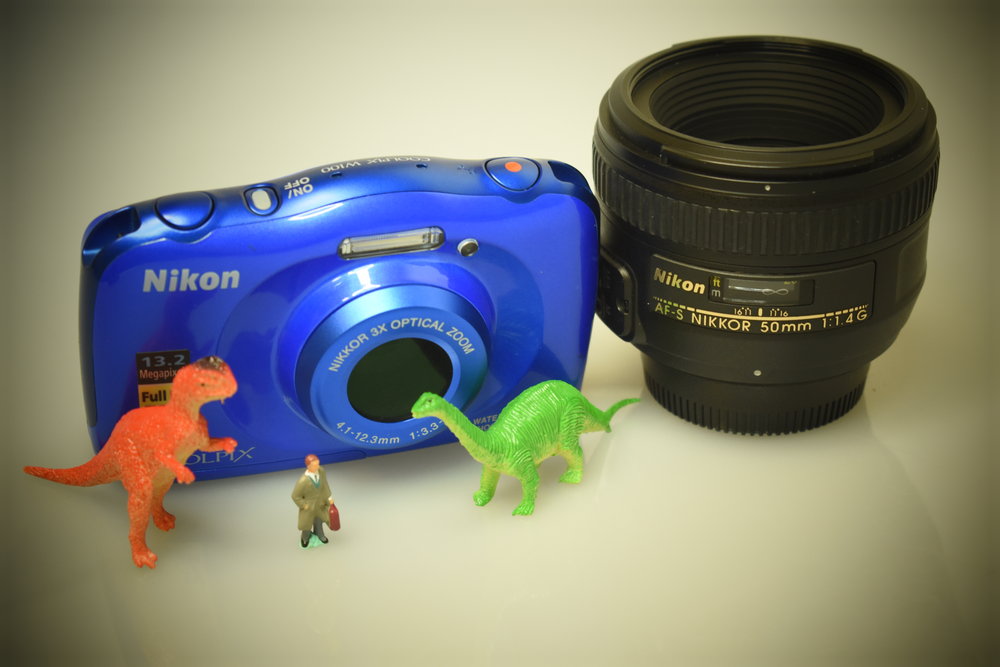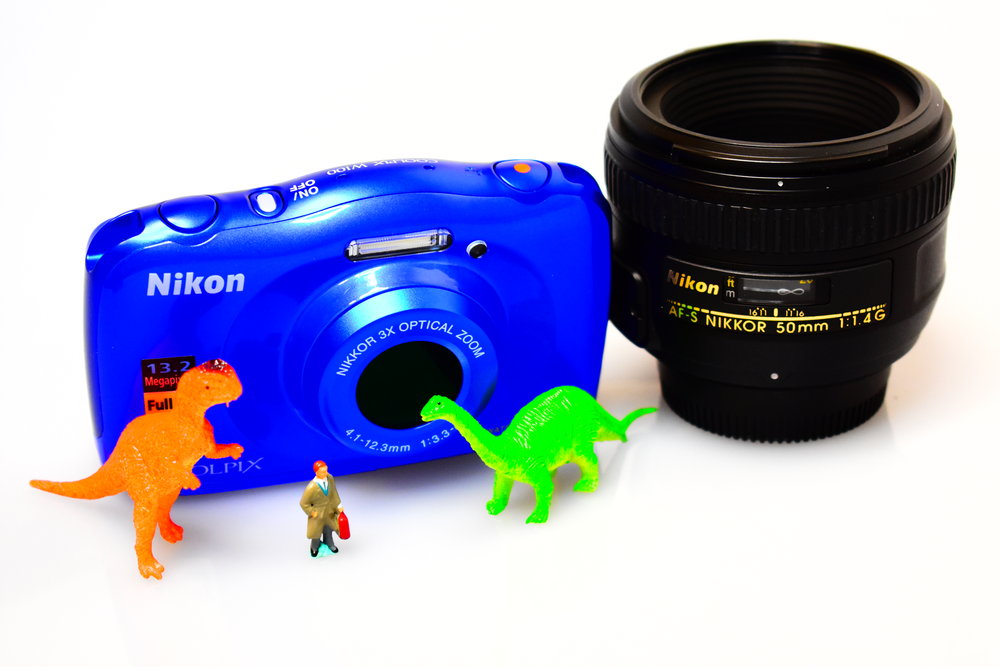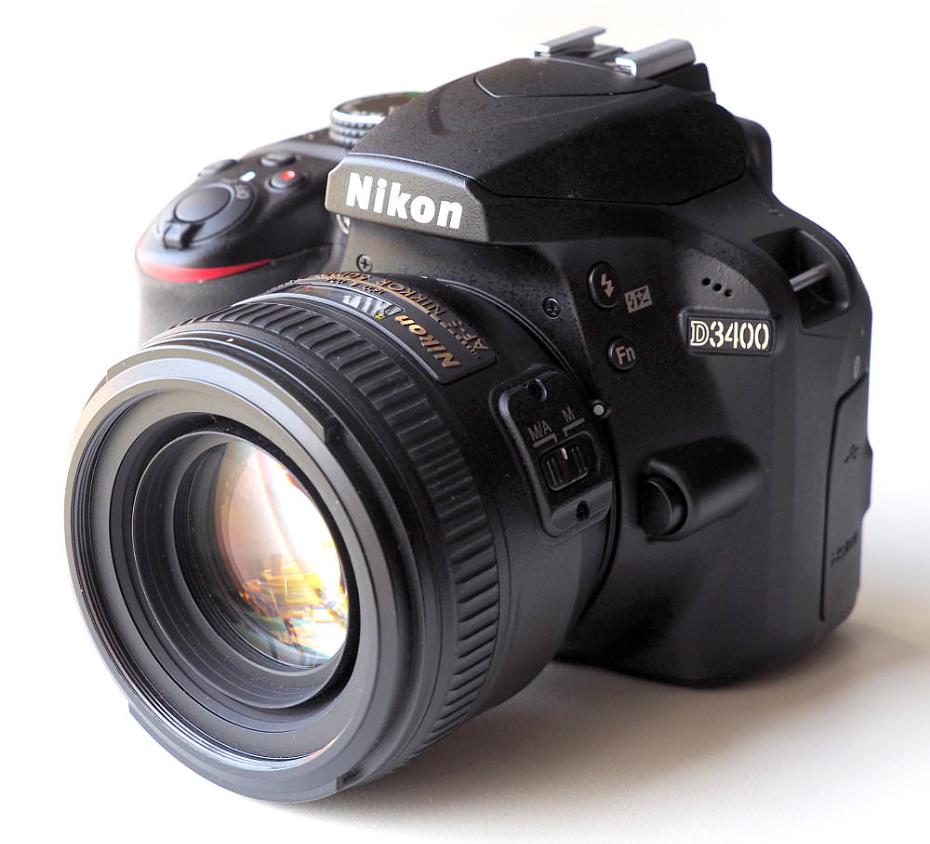
Announced earlier this year, the Nikon D3400 is an update to the D3300, and features low-power Bluetooth for automatic transfer of images, a built-in guide mode, plus long battery life, and a 24 megapixel APS-C CMOS sensor. Nikon says you can "blow away your friends with DSLR image quality" - let's find out how the D3400 performs.
Nikon D3400 Features
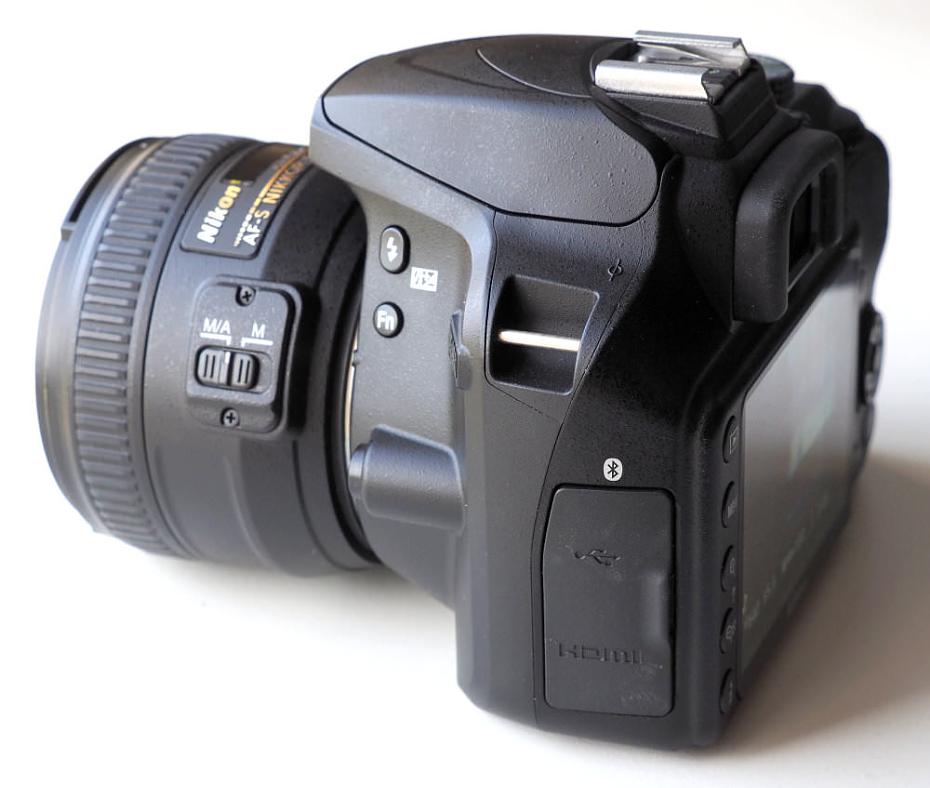
The Nikon D3400 features a 24 megapixel APS-C CMOS sensor with no anti-aliasing filter, for sharp detailed images, and the camera has an ISO range from ISO100 to ISO25600, with an extended "Night Vision" mode that extends the ISO range even further.
The camera has built-in Bluetooth for low-power image transfer, using Bluetooth instead of Wi-Fi.
In kit form, the D3400 comes with an updated AF-P NIKKOR 18-55mm f/3.5-5.6G VR lens which does away with the VR and AF/MF buttons. Instead, you can use the camera's menus to change these settings.
The D3400 updates the D3300 with:
- Bluetooth
- Improved battery life of up to 1200 shots
- Black shutter release button
- Weaker GN7 (8 with manual) Flash (vs GN12)
There are numerous features and shooting modes to make the camera easier to use for beginners, including scene modes, a built-in guide mode, special effects, and auto shooting modes. When you've got used to the more basic shooting modes, you can then move on to full manual controls if you want.
The camera records FullHD video at 60/50p with mono sound.
Battery life is impressive, with the camera now offering up to 1200 shots, an improvement over the D3300's already good 700 shots.
There is 11-point auto focus (AF) with the focus points highlighted in the optical viewfinder. As well as the traditional optical viewfinder, which has a dioptre adjuster, you can use Live View which is activated by a button on the rear.
The photo retouch menu lets you edit photos, where there are a range of tools and effects. Options include Resize, Quick Retouch and Straighten as well as effects including Selective Colour, Colour Sketch, and Miniature Effect. Active D-Lighting helps retain more detail in the dark and bright areas of high-contrast lighting conditions.
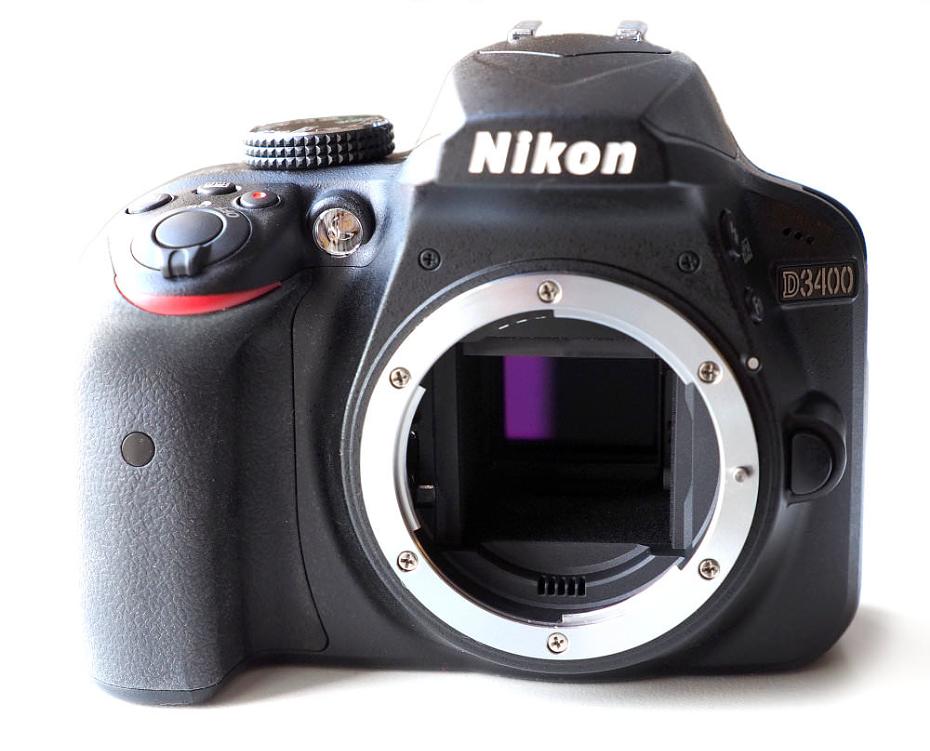
Key Features
- 24.2 megapixel APS-C CMOS sensor (no OLPF)
- Nikon F (DX) lens mount
- Nikon 18-55mm VR (Vibration Reduction optical image stabilisation)
- 3inch screen, 921K dots
- Optical viewfinder with approx. 95% frame coverage and 0.85x magnification
- 11-point AF system
- FullHD video at 60/50p (mono microphone)
- ISO100 to ISO25600
- Night Vision mode (ISO Hi.2)
- Guide mode built-in
- 5fps continuous shooting
- Available in black or red
Nikon D3400 Handling
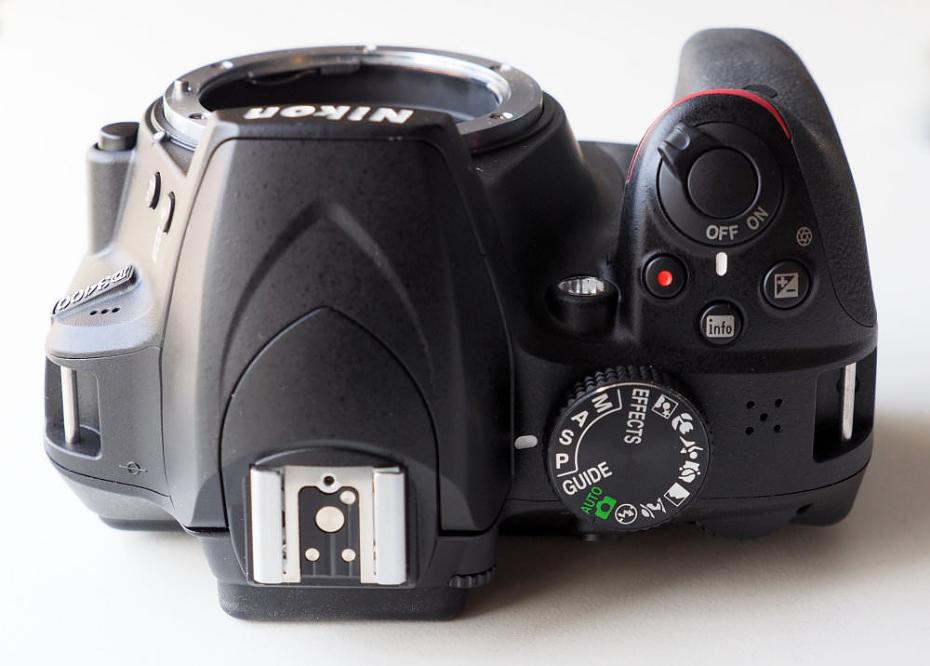
The Nikon D3400 features a large rubber hand grip so that you can get a firm hold of the camera, and there is a rubber grip on the back for your thumb. This makes the camera pleasing to hold, despite the small size for a DSLR. There's also side access to the memory card slot, making it easy to change the memory card when needed. The camera feels well built, and solid, despite the plastic construction of the camera. The D3400 is slightly lighter than the D3300, weighing 445g with battery and memory card (without the lens).
Unlike some recent Nikon DSLRs, the D3400 doesn't feature the more useful white balance settings, such as "Warm" or "White" auto white balance. When we were using the camera, the self-timer needed to be re-set every time, which made work in the studio a little slower than normal.
The Nikon D3400 feels a little like a slightly cut-down version of the D3300, with the microphone socket removed, as well as the A/V out removed, and remote socket removed (instead there is HDMI, and USB). The flash rating is slightly lower, but still suitable for smaller group shots. Like the D3300, there is no Auto Exposure Bracketing mode, nor an auto-HDR mode, and unlike the D3300 there is no HDR painting mode, and the auto-panoramic shooting mode has also been removed.

Using Nikon's Snapbridge app on your smartphone lets you setup image transfer so that when a photo is taken it is automatically sent to your smartphone. However, as the D3400 doesn't feature built-in Wi-Fi, the remote shooting option isn't available. This is disappointing considering that other budget cameras from Nikon, such as the Nikon Coolpix B500 feature built-in Wi-Fi, and therefore allow remote shooting.
There are 11 focus points that are highlighted in red when active, with a cross-type sensor in the middle, and the optical viewfinder has a soft rubber surround along with dioptre adjustment. With an AF assist light, the Nikon D3400 is able to focus in low-light, although can struggle at times depending on the subject being photographed, and the success in low-light conditions is worse when using live view.
Using live view is slower than using the optical viewfinder, with focus and shutter response being noticeably slower, particularly if you've come from a compact or mirrorless camera, and are expecting it to be as rapid. For the quickest focus and speed, using the optical viewfinder is the way to get the best performance out of the camera.
You can change settings using the buttons on the camera, or using the i button to change settings on the rear screen. The menus are clearly and neatly laid out with colour coded sections for photo, setup and retouching photos. There's also built-in help, which will help beginners, and to access this you simply press the question mark button.
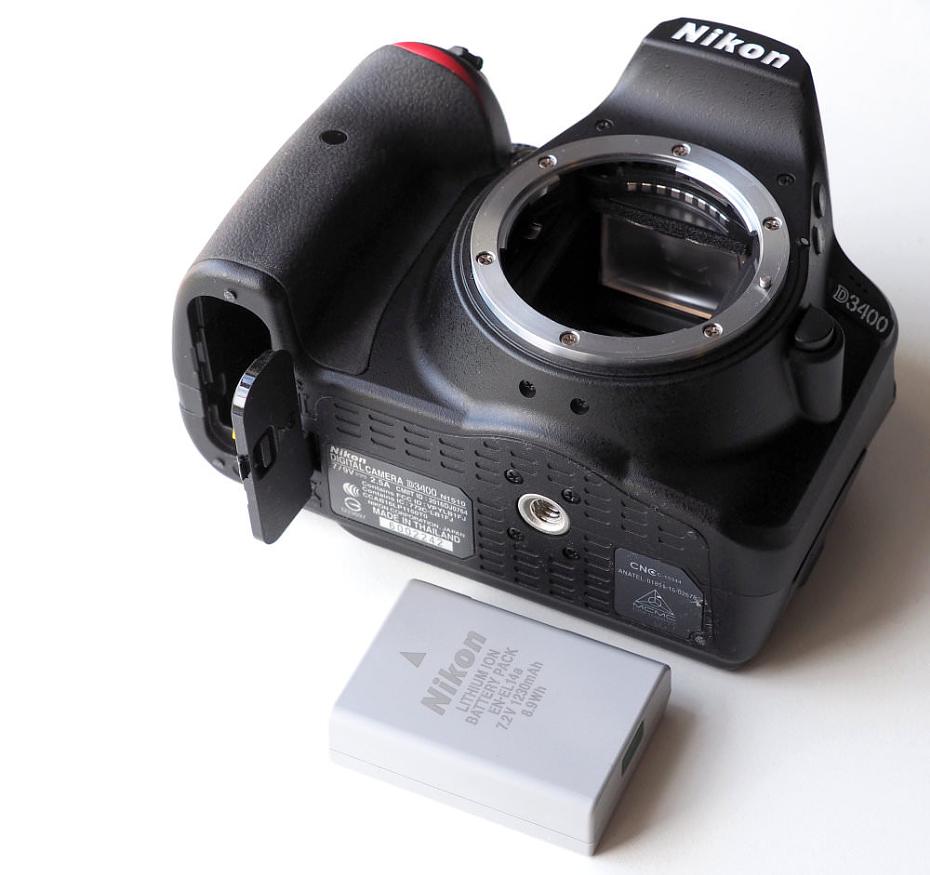
Battery life - Battery life is rated at 1200 shots according to Nikon / CIPA test results (with Bluetooth switched off), which is excellent for an entry-level Digital SLR.
Nikon D3400 Performance
The performance section is where we look at the image quality performance of the camera. Additional sample photos and product shots are available in the Equipment Database, where you can add your own review, photos and product ratings.
Speed - We took a number of shots to test the camera's responsiveness, from switch on to first photo, shot to shot, focusing speed etc. We take a number of shots and then use the average to ensure accurate and consistent tests, making it easy to compare with other cameras.
| Shutter Response | <0.1secs (0.3secs Live-view) |
| Wide - Focus / Shutter Response | 0.2secs (0.7secs Live-view) |
| Full zoom - Focus / Shutter Response | 0.2secs (0.6secs Live-view) |
| Switch on Time to Taking a Photo | 0.55secs |
| Shot to Shot without Flash | 0.4secs |
| Shot to Shot with Flash | 1.0secs |
| Continuous Shooting - JPEG (shots before slow down) |
4.7fps (100 shots) |
| Continuous Shooting - RAW | 5.4fps (8 shots) |
Live view shutter response and focus speeds are slower than using the camera with the optical viewfinder, however they are an improvement over the D3300 which was much slower.
Nikon D3400 Sample Photos
Sample Photos - The Nikon D3400 gives good results, with pleasing colours, and good skin tones for portraits. Exposure is reliable, and dynamic range is also very good, meaning you can recover a good amount of detail from shadow areas in images. The D-Lighting option will also help with dynamic range in-camera and can be applied when taking the photo or afterwards in the Retouch menu. By shooting raw, you'll be able to recover even more from the image, whether it's under or over-exposed.
Nikon D3400 Lens test images
Lens Performance - The 18-55mm kit lens performed reasonably well, and was sharper in the centre of the frame. Purple fringing was noticeable in shots where there were high levels of contrast, for example when shooting trees against a bright sky, and this is worse towards the corners of the frame.
You'll need a prime lens to get blurred background (bokeh), and better subject separation. Without AF finetune, care needs to be taken when shooting with prime lenses with a bright aperture, and portrait photography can be difficult when compared to compact cameras or mirrorless cameras with face and eye-detection focus systems, with the D3400 having a fairly high miss rate (number of photos out of focus). Alternatively, you could use liveview focusing, although this is much slower.
Nikon D3400 ISO test images
ISO Noise Performance - Noise performance is very good up to ISO3200, and at ISO6400 noise becomes more noticeable, but still provides usable results. The noise in images is quite "grainy" or "film-like" which gives images with noise a fairly pleasant look. ISO12800 shows quite high levels of noise, but if you wanted to use these images you could simply resize the JPEGs or process the raw files yourself. ISO25600 shows the highest level of noise, and this is best avoided.
There's a further high ISO mode, under the Effects setting on the mode dial, called "Night Vision" mode and the ISO setting will go up to Hi.2. The Nikon D3400 gives better noise performance at ISO6400 than the Canon EOS 1300D, and is also slightly better than the K-S2, and A68. There's also a slight improvement over the D3300.
Nikon D3400 White-balance test images
White Balance Performance - The camera has auto white balance (AWB) settings, as well as tungsten and fluorescent preset options, but doesn't feature control over the level of correction, for example there are no "warm" or "white" correction options for auto white balance, unlike some of the other new Nikon Digital SLRs (or Canon's latest range of DSLRs, including their entry-level 1300D). There are however 7 (yes seven!) different fluorescent presets, and you can finely tune the white balance settings, as well as custom white balance.
Nikon D3400 Digital filters
Digital Filters - There are a number of effects available, including High Key, Low Key, Miniature, Photo illustration, Pop, Selective Colour (select up to 3 colours), Silhouette, Toy Cam, and Super Vivid. Picture control lets you choose from standard, neutral, vivid, monochrome, portrait or landscape, and these can be customised letting you adjust sharpening, contrast, brightness, saturation and hue. The camera doesn't feature a panoramic shooting mode.
D-Lighting improves photos, retaining more detail in highlights and shadows, however the camera does not feature an automatic HDR mode. If you wanted to shoot the shots needed for a manually created HDR you would normally turn to auto exposure bracketing (AEB), and rather surprisingly for a Digital SLR this camera does not feature AEB, instead you will need to shoot RAW if you want to get additional dynamic range out of your shots or adjust the exposure compensation manually.
The retouch menu options include: Raw processing, Trim, Resize, D-Lighting, Quick retouch, Red-eye correction, Straighten, Distortion control, Perspective control, Fisheye, Filter effects, Monochrome, Image overlay, Colour outline, Photo illustration, Colour sketch, Miniature effect, Selective colour, Painting, Edit movie and side-by-side comparison.
Video - The D3400 records full HD video with mono sound. Unfortunately, there is no microphone socket, which is a shame as the D3300 has a microphone socket. Use of a tripod or a lens with VR (Vibration Reduction) built-in is recommended for steady video.

Value For Money
The Nikon D3400 is available for £468 with the kit lens which makes it reasonable value for money, although we would expect that to drop over time.
Canon EOS 1300D, 18mp, Wi-Fi, NFC, 3fps continuous shooting, £322 with IS lens
Nikon D3300, 24mp, 5fps continuous shooting, £350 with lens
Sony Alpha A58, 20mp, 5fps continuous shooting, tilting screen, £249 (if available) with lens
Pentax K-S2, 20mp, Wi-Fi, NFC, 5.4fps continuous shooting, vari-angle screen, £469 with lens
Olympus OM-D E-M10 II, 16mp, Wi-Fi, 8.5fps continuous shooting, £520 with lens
Panasonic Lumix G7, 16mp, Wi-Fi, 8fps continuous shooting, 4K video, £599 with 12-60mm lens
Sony Alpha A5100, 24mp, Wi-Fi, NFC, 6fps continuous shooting, £349-499 with lens
Sony Alpha A6000, 24mp, Wi-Fi, NFC, 11fps continuous shooting, £499 with lens
Fujifilm X-T10, 16mp, Wi-Fi, 8fps continuous shooting, £449 body only
Have a look at more DSLRs in our Top 10 Best APS-C DSLR Cameras. You'll also need to buy a memory card and a case or bag to keep your camera safe and protected - have a look at our complete guide to camera bags.
Nikon D3400 Verdict
Designed to be an entry-level, easy to use DSLR the D3400 features built-in Bluetooth (but not Wi-Fi) and unfortunately, there are limitations including the inability to shoot remotely, and the camera has less connectivity than the D3300.
For those looking for DSLR image quality then noise performance is very good and better than much of the competition at this price point. Focus and shutter response are both fast when using the optical viewfinder, becoming much slower when using liveview. The kit lens performs reasonably well, and is quite compact, but to get the best results, a prime lens, such as the 50mm f/1.8 or f/1.4 is recommended.
If you want a Digital SLR that can instantly share photos to your smartphone, then the Nikon D3400 offers great image quality and good value for money. If you can live without the instant connection, and want to remotely control your camera then there are other options available.
 |
If you want a Digital SLR that can instantly share photos, then the Nikon D3400 offers great image quality. |






